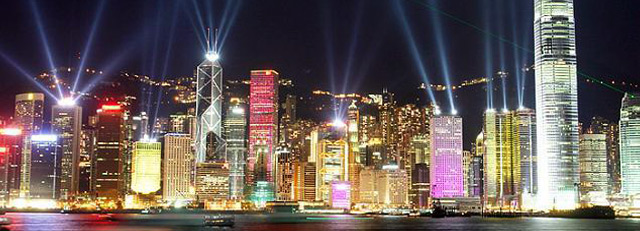ABOUT HONG KONG

Hong Kong is, without doubt, one of the most exciting cities in the world.
The blend of East and West, the dramatic harbour and astounding cityscape backed by the green hills, the harmonious multicultural population, the travel opportunities – all these are waiting. When the British first arrived in Hong Kong during the Opium Wars of 1839-1842, they described it as a ‘bare, barren rock’.
This ‘barren’ rock has now become one of the world’s most important trading centres with a population of some seven million people, mainly descended from Mainland Chinese migrants, but including a melange of all nationalities, a truly cosmopolitan city. 95% of the population are Chinese and the majority of these are Cantonese from the area immediately north of the SAR. Other local long term Chinese residents include Hakkas (farmers), Tankas (fishermen) and Hoklos (boat-people) though people coming to live in Hong Kong from various parts of mainland China such as Shanghai and Beijing are increasing in number.
The international community is indeed a multicultural and interesting sector of the population. The largest group are the Filipinos, the majority of whom are domestic helpers. Other Asian nations are much in evidence, including Indians and Pakistanis many of whom have been here for generations. Large numbers of Europeans, Americans, Canadians, Australians, New Zealanders and South Africans make this truly one of the melting pots of the world with over 50 nationalities in total resident here.
The Chinese for Hong Kong (‘heung gong’) means ‘fragrant harbour’ and whilst that was the original attraction, the population soon grew at a dynamic pace, causing a shortage of housing that still continues to be a problem, due to the lack of natural flat land on which to build, so the reclamation of waterfront areas started in 1904, and continues even now.
Hong Kong flourished and grew in international importance as a trading port until the Second World War. The Japanese occupation from 1941 to 1947 caused great hardships and a decline in population, but with the true Cantonese grit, assisted by British infrastructural expertise, Hong Kong soon bounced back. The next major problem Hong Kong faced was the huge influx of Chinese nationals following the foundation of the People’s Republic of China in 1949.
The hub of the HKSAR is Hong Kong Island which houses the Central business district, most of the senior Government offices and the majority of the luxury residential premises. Opposite the island’s north shore is the Kowloon area, leading to the New Territories and the border to the PRC.
Some of the most densely populated areas lie between Kowloon and the border. There are also 235 outlying islands, some of which are accessible by public ferry such as Lantau, Lamma, Cheung Chau and Peng Chau. The airport, Chap Lap Kok, is found on the northern side of Lantau, which is also the largest of the islands, with steep peaks and glorious beaches on the south coast. The whole SAR covers an area of 1095 square kilometres (422sq miles), with Hong Kong Island being only 11 (N/S) x 14 (W/E) kilometres (32sq miles).
The highest point is Tai Mo Shan in the New Territories which is 957 meters, with the highpoint on Hong Kong Island, the Peak, being just 551 meters above sea level. There are numerous beaches, hiking trails and natural points of interest, with diverse flora and fauna and some breathtaking views, particularly at sunset.
